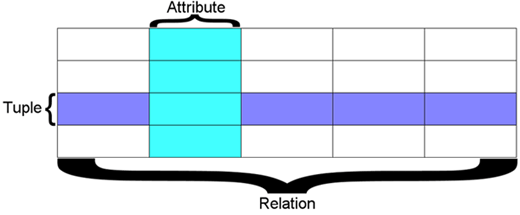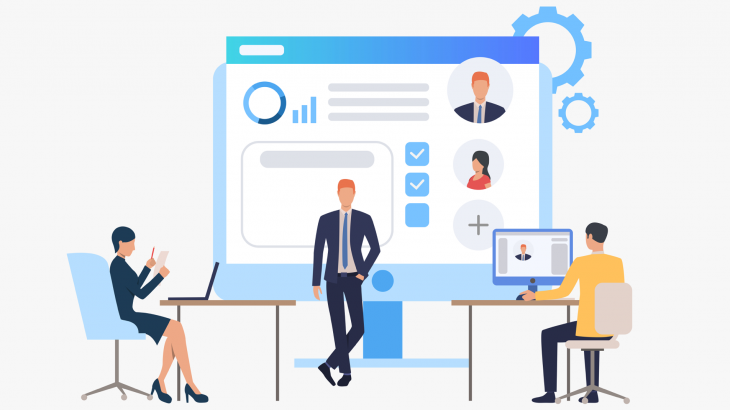Information Technology is the application of computers and techniques to restore retrieve and manipulate data often within an organization.
To facilitate the functioning of HR and make it more proactive, IT and HR have been merged to form HRIS. In short, one can describe HRIS as an online solution for the entry, tracking of data, information that a human resource management group requires for realizing its strategic objectives and aligning its functions with the organizational vision.
To get a clear idea of HRIS and its applications in management systems, one should get a clear idea of data, information and knowledge. For any organization, effective data management is their primary concern and it’s the lifeblood. Data presents the facts and figures in an unstructured form. Information on the other hand, is the interpretation of data which is always directed towards the fulfillment of a goal.
In the words of Davenport & Prusak (2000), for the data to become an information, it should be contextualized, categorized, calculated and condensed. Information, thus offers a bigger picture by adding meaning to the data which is made available. Knowledge, addresses the how related aspects, other than what and why.
Information with a meaning is knowledge (Whitehill, 1997). Knowledge, details the procedures for using the data and information for making crucial decisions and dealing with business. In the context of HR, knowledge, data and information play a vital role in implementing important strategies for management of human resources by referring to the facts and figures related with the human resources and demographic profiles.
DBMS (Database Management System) was introduced in and around 1960-1970 by IBM. It is useful for creating and managing databases. The programmers and users can create, retrieve, update and manage data systematically, promotes data sharing from top to bottom level of the management, improves data security, better data integration and improves productivity of the organization.
Several popular databases which are currently being used are based on the relational database model. A relational database management system (RDBMS) is based on the relational model as invented by E. F. Codd, of IBM’s San Jose Research Laboratory. Oracle, IBM’s DB2 and SQL Server of Microsoft are some of the leading RDBMS products. RDBMS has proven to be one of the most popular relational databases which is being used by the organization’s in the present scenario because of its benefits which it offers and it addressed the limitations of old DBMS structures.
In the present scenario, organizations adopt an integrated approach for creating synergies and achieving a competitive advantage in the industry. Information sharing and dissemination across various levels of hierarchy and functional areas play an important role in management functioning and decision making. RDBMS encourages effective coordination and alignment in the functioning of various departments, which was referred to as ERP (Enterprise Resource Planning) as stated by Martin, Brown, Hoffin and Perkins, 1999.
DATA sharing is required in different functional areas as well as across different levels of management specially the Human Resource Department. The levels of management can be primarily subdivided into 3 broad categories and they are Top level, Middle level and Lower level (Operative or the Supervisory or First Line Managers). There are three types of data sharing:
Sharing between Functional Units
RDBMS facilitates integration of various business applications as a result of which each functional department can have an access to pool of data apart from accessing their own departmental data. ERP modules essentially are the integrated applications used commonly by large organizations for meeting their business objectives by aligning the departmental functions.
Sharing data between Different Levels of Users
Data sharing is done by the users of different levels, which can be broadly classified as operations, middle management and executive. These levels correspond to the three different types of automated business systems that have evolved during the past three decades.
- Electronic Data Processing (EDP): EDP was first applied to the lower operational levels of the organization to automate the paperwork. It laid its focus on efficient transaction processing, had its focus on data, storage, processing and flows at the operational level and summarized reports for the management.
- Management Information System (MIS): The MIS approach elevated the focus on information systems activities with additional emphasis on integration and planning of the information systems function.
- Decision Support System: DSS focuses on top managers and key decision makers, the major emphasis is on quick response, adaptability, flexibility and is decision focused. Data mining, data analytics and business intelligence are examples of information taken from DSS, which depends heavily on data warehouses. Data warehouses are aggregated data gathered from various databases available with the business.
Sharing data between Different Locations
A company which operates in various locations, needs to share and manage data across diverse geographical area. Sharing these data is a real big problem.
Database Management System versus Relational Database Management System
- Relationship among tables is maintained in RDBMS whereas this is not the case with DBMS as it is used to manage the database.
- RDBMS is essentially used for more complex and much detailed business applications and on the other hand DBMS is used for simpler business applications
- RDBMS solution is required by large sets of data whereas small sets of data can be managed by DBMS.
Model for Relational Database Terminology

The above model was proposed by E.F.Codd in 1970. As shown in the above model, an attribute explains the characteristics of the entity, for eg. In case of an employee, the characteristics could be name, age, address, contact details, education, etc. They are stored as columns (also regarded as fields) in the table.
A table stores the information about entities, each table contains rows, each row represents one entity and the column represents the attributes. Rows are even called as records, tuples or entities and each row should be unique. Columns are not numbered and the column names should be descriptive.
- Primary key: A primarily key uniquely identifies each record in a table. This may have a single attribute or a combination of attributes.
- Foreign key: A foreign key essentially provides a link between data in 2 tables and acts as a cross reference between the tables.
Forms can be used to maintain, view and print records in a database more effectively and they can present data in a much more effective and useful manner along with customizations. Forms have navigation buttons that facilitate movement from one field to another field and from one record to another record. Once a data is entered or changed in a form and is saved, the values in the table automatically changes.
A report is the formatted representation of data from a table, multiple tables or queries that is created for obtaining a print or to be viewed on screen. Reports can only be viewed and unlike forms in a report the data cannot be changed or a new record cannot be added to a report.





